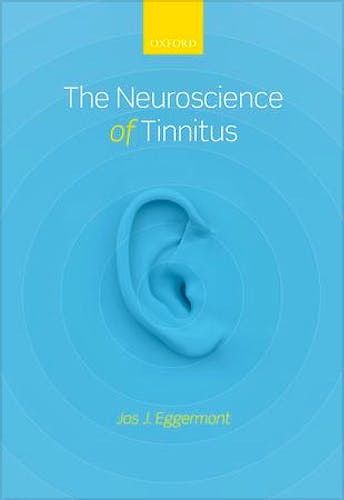

No hay productos en el carrito



The Neuroscience of Tinnitus
Eggermont, J.
1ª Edición Junio 2012
Inglés
Tapa dura
302 pags
738 gr
18 x 25 x 2 cm
ISBN 9780199605606
Editorial OXFORD
LIBRO IMPRESO
-5%
141,22 €134,16 €IVA incluido
135,79 €129,00 €IVA no incluido
Recíbelo en un plazo de
2 - 3 semanas
About this book
- Includes historical accounts, showing how Tinnitus is not just a phenomenon of modern times
- Written by a scientist with over 30 years experience in tinnitus research resulting in a book which gives personal view of the entire field of modern tinnitus research and one that is enriched by the author's personal experience with most of the research techniques described in this book
- Covers both animal and human research offering a comparison of findings in humans and animals which provide new insights into tinnitus
- Presents a detailed study of proposed mechanisms in animal models and its validation in humans.
Tinnitus - the perception of sound in the ear, in the absence of external
sound - affects around 250 million people worldwide. It occurs in adults as
well as in children, in war veterans and factory workers, in classical musicians,
rockstars, and disc jockeys. Consequently, a history of recreational, occupational,
and firearm noise exposure may all be associated with an increased likelihood
of acquiring tinnitus.
Being a subjective phenomenon, tinnitus is difficult to measure, though, in
the past decade, it has become the subject of intensive scientific research.
Research in neuroscience has revealed how tinnitus is generated by the brain
when hearing loss occurs, and this research has played a part in helping us
understand the cause, diagnosis, and treatment of this disorder.
The Neuroscience of Tinnitus reviews our current knowledge of the neural substrates of tinnitus. It draws heavily on the author's own extensive work in this field, and is divided into two parts, the first focusing on human models, the second on animal models. The book describes the search for the neural mechanisms that underlie the amplification process resulting in tinnitus, and ways to manage its maladaptive side effects. Based on over 1000 references and the author's own experience, both of tinnitus and the research into its mechanisms, this book is the most comprehensive single-author book on the market. It is a valuable reference source for auditory neuroscientists, and also to those in the fields of audiology, psychology, neurology, and otolaryngology.
Readership: (Auditory) Neuroscientists, Audiologists and ENT surgeons, clinical psychologists and psychiatrists, Neurologists, and Neurosurgeons.
Table of Contents
1: What is tinnitus?
2: Epidemiology and etiology
3: Listening to tinnitus
4: Objective assessment of tinnitus
5: Do animals have tinnitus?
6: The salicylate model of tinnitus
7: The sensorineural hearing loss model of tinnitus.
8: The somatic tinnitus model
9: The neural synchrony model of tinnitus
10: Tinnitus and aging
11: Hyperactivity and hypersynchrony in neural networks as substrates for tinnitus?
12: Management of tinnitus
13: Future directions
14: References
Author Information
Jos J. Eggermont, Department of Psychology, University of Calgary, Canada
Jos Eggermont received his M.Sc. in Experimental Physics (1967) and a Ph.D. in Physics (1972, cum laude) from the University of Leyden, The Netherlands. From 1972-1978 he was a Research Associate, ENT Department, Leyden University Hospital, interrupted for a sabbatical leave at the Ear Research Institute, Los Angeles, California, USA. From 1978-1986 he served as professor in experimental physics at the University Nijmegen, The Netherlands. In 1986 he moved to Calgary, Canada and became an Alberta Heritage Foundation of Medical Research Scientist and professor in Physiology and Pharmacology, and Psychology at the University of Calgary. In 1997 he was named Campbell McLaurin Chair for Hearing Deficiencies. His research interest is the auditory system in general and auditory cortical plasticity in particular. He has studied the consequences of early deafness and noise-induced hearing loss in with respect to use-dependent plasticity in the cortex.
© 2025 Axón Librería S.L.
2.149.0